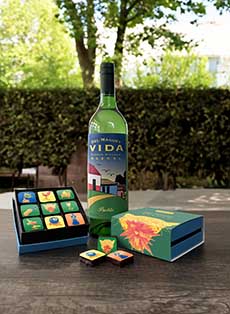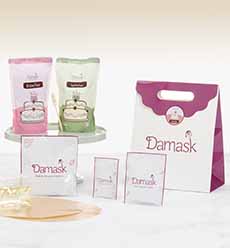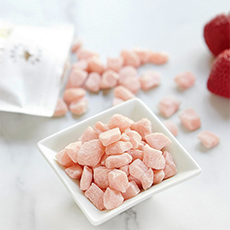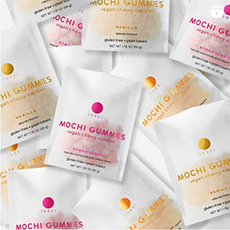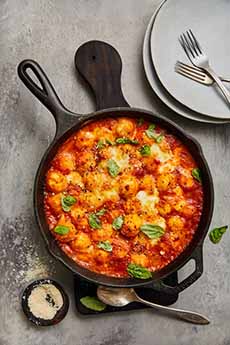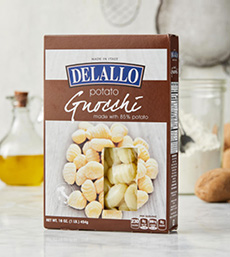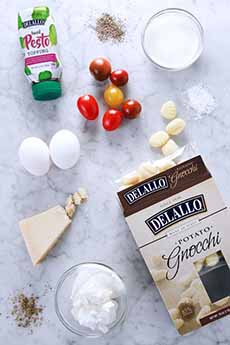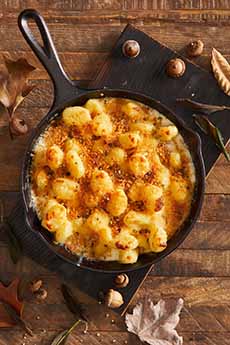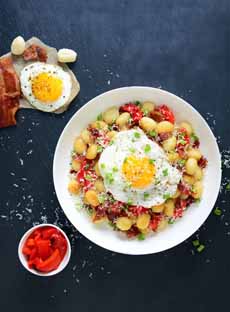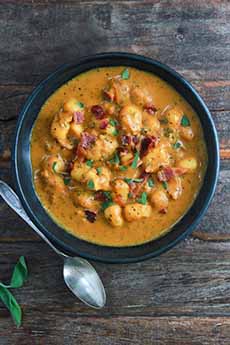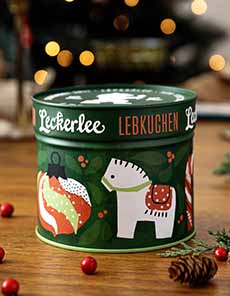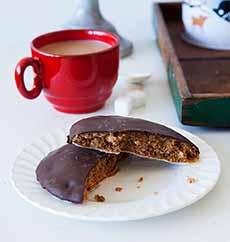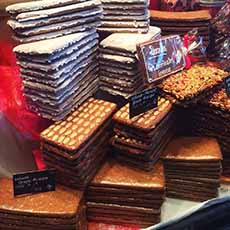|
Lebkuchen is a classic German Christmas cookie, not well-known in the U.S. But there is an artisan cookie maker in Texas who bakes them every year. They’re a treat for your own table and as gifts, in beautiful gift tins.
They are not the same as gingerbread, as you’ll see below.
Lebkuchen (pronounced LEYB-koo-chun, with the “ch” the German guttural as in ach or echh) is a centuries-old German spiced treat traditionally baked during the winter holiday season.
LECKERLEE LEBKUCHEN
One American, experiencing them in Germany, decided to start her own lebkuchen bakery in the U.S., and named it Leckerle.
The company’s name is a play on the German words for delicious/treat and Sandy’s surname.
Sandy lived in Berlin from 2009 to 2011, and it was at the annual Christmas Market there that she first encountered lebkuchen.
She quickly became obsessed with learning how to make them, and toured around Germany, visiting Christmas markets and esteemed Nuremberg lebkuchen purveyors to sample their wares.
Once she had perfected her recipe, she moved back to the U.S. to start Leckerlee.
Since 2011, Sandy Lee has been baking authentic Nuremberg-style* lebkuchen using the highest-quality ingredients and time-honored techniques. Sandy’s lebkuchen are baked by hand in Colorado, and only during the traditional winter season.
Leckerlee is the only U.S.-based lebkuchen producer specializing in authentic Nuremberg-style lebkuchen.
If you find yourself in the Boulder, Colorado area, you’re invited to visit the Leckerlee baking facility in Longmont.
The cookies are 40% almonds and hazelnuts (the first listed ingredient is nuts, not sugar), use cold-ground spices (to preserve their aroma and flavor), and are all natural (no artificial preservatives, flavors, or additives).
GET YOUR LEBKUCHEN
Head to Leckerlee.com.
You’ll find classic, gluten-free, mini, and chocolate-covered options.
They solve the problem of what special gifts to give, and what special sweets to serve inn your own home.
Leckerlee lebkuchen are baked in small batches and arrive fresh, no matter when you order it. You can also freeze them† to enjoy them throughout the year.
The signature Nuremberg lebkuchen are packaged in 1-pound boxes of 5 lebkuchen cookies.
Lebkuchen has a naturally long shelf life, and Leckerlee uses no artificial preservatives.
But Leckerlee recommends that you eat the lebkuchen within a few weeks for optimal texture and taste. As long as you store your lebkuchen in an airtight container in a cool, dry place, they’ll remain fresh for more than 3 months.
Should the lebkuchen lose some of its moisture, try the old trick of adding a piece of sliced apple to the container for one to two days and then remove it.
THE HISTORY OF LEBKUCHEN
Lebkuchen is a traditional German Christmas cookie, as is gingerbread. The difference between the two is below.
The origins of lebkuchen can be traced to Franconian monasteries in 13th-Germany Bavaria. The monks were skilled in the art of baking and often used honey, spices, and nuts in their recipes.
(An aside: Earlier, around 610 C.E., monks in Southern France or Northern Italy invented pretzels. Here’s the history of pretzels.)
The original lebkuchen was likely a variation of the honey cakes that were baked in ancient Egypt as gifts to the gods. The cakes later spread throughout Europe.
In fact, lebkuchen is also known as honey cake (Honigkuchen*) and pepper cake (Pfefferkuchen*).
Etymology
The name is derived from the German words “leb,” meaning life, and “kuchen,” meaning cake.
“Leben” is a derivative of “leibspeise,” which means favorite food, or possibly has something to do with the Germanic term “lebbe” meaning very sweet.
Nurenburg-Style Lebkuchen
In the 14th century, Nuremberg, Germany became known as a center for lebkuchen production. Its reputation for quality became famous throughout Europe.
Nuremberg thrived as the center for lebkuchen production for two reasons.
The dense forests around the city were a vast source of honey, a key ingredient in lebkuchen.
Nuremberg was located at the crossroads of ancient spice trade routes, giving it access to the then-exotic spices found in lebkuchen.
The city established strict rules and regulations for making lebkuchen, and only bakers who were members of the local gingerbread guild were allowed to produce and sell them.
As their popularity spread, lebkuchen recipes became varied by region and were closely guarded secrets. However, the ingredients commonly included honey, spices such as cinnamon, cloves, and nutmeg, as well as nuts like almonds and hazelnuts.
The dough was often enriched with candied citrus peel. Some recipes also included anise, cardamom, and other aromatic spices.
Nuremberg-style lebkuchen, known as Nürnberger Lebkuchen or Elisenlebkuchen in Germany, are the crème de la crème of lebkuchen, having the highest nut content—typically almonds and hazelnuts, but also walnuts and cashews.
By definition, Nürnberger Lebkuchen must contain a minimum of 25% nuts and less than 10% wheat flour.
The finest artisanal lebkuchen bakeries in Nuremberg boast close to 40% nut content. Leckerlee has a 40% nut content!
Due to its higher nut content, quality, and packaging, Nuremberg lebkuchen commands a premium price.
But industrial manufacturers tend to meet the bare minimum threshold of 25%. You get what you pay for.
Nuremberg lebkuchen usually contain marzipan or almond paste (which has twice the amount of almonds), candied citron, and orange peel.
They always have an edible wafer (collectively known as Oblaten or Back Oblaten) on the bottom. They are rather large in size, most often rounded (~4” in diameter), but sometimes rectangular (~8” long x 4.75” wide).
Over time, lebkuchen (along with gingerbread) became associated with Christmas and other festive occasions, because the expensive spices made the cost of the cookies an indulgence.
The cookies were (and still are) often elaborately decorated with icing and sugar glazes, and the wealthy could enjoy lebkuchen with added gold leaf (well, there’s less gold leaf around these days).
Other Types Of Lebkuchen
Feine Oblaten Lebkuchen
The next level down from Nuremberg lebkuchen, in terms of quality and price, is Oblaten Lebkuchen. The name translates to oblate, from Latin oblatus, “one offered up,” in Roman Catholicism.
That’s because there’s an edible, paper-thin communion wafer on the bottom of each cookie.
The wafers are made from wheat flour, starch, and water. Franconian monks used communion wafers to prevent the lebkuchen dough from sticking to the baking sheets. This use of communion wafers remains quite common in German baking today.
Please don’t peel them off! The Oblaten are an integral part of the lebkuchen-eating experience.
There are two categories of oblaten lebkuchen:
Feine (fine) oblaten lebkuchen, which must have at least 14% nut content.
Standard oblaten lebkuchen, without the “feine” distinction, which need to have only 7% nut content.
Oblaten Lebkuchen is industrially produced in mass quantities. Some common brands available in the U.S. include Lebkuchen Schmidt and Wicklein.
Braune Lebkuchen
This category has no wafers and usually no nuts. The dough is comprised primarily of wheat flour and honey.
The big, decoratively frosted lebkuchen hearts (Lebkuchenherzen—photo #10) sold during the Oktoberfest festivities fall into this category. So do the bags of lebkuchen pieces in the shapes of hearts, stars, and pretzels, and any lebkuchen pieces that have a fruit filling.
These types of lebkuchen are fundamentally different from Nuremberg lebkuchen, and even though they are all referred to as lebkuchen, they are not directly comparable.
Some common brands available in the U.S. include Bahlsen, Weiss, and Lambertz.
Modern Lebkuchen
During the 19th century, lebkuchen spread beyond Germany, and variations emerged in different European countries.
Each region added its own twist to the traditional recipe, incorporating local ingredients and flavors.
Today, lebkuchen is enjoyed not only in Germany but also in many other countries, especially during the Christmas season.
Commercially produced lebkuchen is widely available, but there are still many bakers who adhere to traditional recipes, keeping the rich history of this festive treat alive.
|

